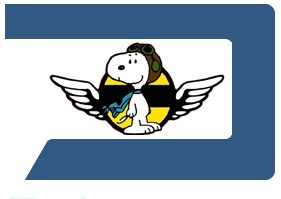

Building the MachNone
A Sky Pup Construction Project
Sky Pup
Test flying your Sky Pup will be a very rewarding experience--provided you adhere strictly to the cardinal rules governing the flight of new machines.
First, do not, DO NOT, attempt to fly the Pup if you have no previous flight experience. Even though the Sky Pup is probably the easiest-flying machine you will ever encounter it is still different than operating a ground vehicle and a minimum of several hours flight time in other aircraft is highly recommended. Don’t be too proud to let someone more experienced make the test flight for you. They’ll be able to feel the airplane out and explain the sensations to you before you try it.
Test flights should be conducted only in the calmest conditions with a good firm surface to operate from, and plenty of room for climb out and approach. Save the short field and cross-wind training for later. All you want to accomplish at this point is basic flight--nothing fancy.
Since the Sky Pup is fairly tail-light on the ground, a few precautions are in order. Never stand on the floor board when climbing in or out of the cockpit. The floor board is not designed to handle your weight and the aircraft will tip on its nose. Always stand on the ground through the hole in the floor when entering or exiting. The second precaution is that it is possible to raise the tail so high that the propeller will contact the ground. This will not happen inadvertently, but don’t let the attitude go beyond level when on the ground.
Start out by taxiing the bird and practicing turns on the ground. Directional control is very simple and even without brakes or steerable tailwheel, you’ll get the feel of it in just a few minutes. The tail will come up easily with the addition of power and forward stick. This can be used to aid in turning. Taxi at various speeds until you can track straight down an imaginary line without wobbling from side to side. For tight turning, your hand can be used to grab a tire and produce differential braking effect. Keep the prop out of the dirt.
Once you are extremely familiar with ground handling characteristics (you make the correct control inputs instinctively rather than having to think about them) you are ready to try some low-level hops. Practice making runs at increasing power settings until you find the setting where the airplane will just barely fly. Make several runs at this power setting, lifting off only a foot or two, and then reducing power and landing. During the rollout, the stick should be held full aft to prevent any bobbing tendency. At this point, you’ll find out just how well-mannered the Sky Pup really is.
Only after you’ve mastered flying at low level should you attempt a full-circuit flight. On your first takeoff, apply full power and let the aircraft fly itself off the ground. Don’t climb steeply and concentrate on using only the amount of control input needed to accomplish the desired change. Climb straight out to several hundred feet before making any turns. Remember that the rudder controls both yaw and roll. Very gentle pressure on the rudder bar will produce a change of course without much tendency to roll. On the other hand, rolling is accomplished by a quicker input of rudder so that the aircraft rolls without changing heading significantly. The first few turns should be very gentle and will probably feel a little awkward to a conventional three-axis control pilot. This feeling will go away in a few minutes, so don’t let it bother you. Fly at altitude until you feel that you are ready to make your first landing.
The Pup’s glide angle is similar to many conventional airplanes and much better than most ultraliqhts. Judge your approach accordingly and don’t try to “put it on the numbers” the first time. You won’t roll very far once you’re down so don’t be alarmed unless you float all the way to the other end. Set up a reasonable glide and use the rudder to make heading changes which will keep the nose into the wind. Continue the glide until you are about ten feet above the ground. Then begin a gentle flare to arrest your descent and “feel” your way down to the ground. The Pup can be wheel-landed or three-pointed with equal ease.
Once you’ve rolled to a stop after your first flight, climb out and savor the moment. You deserve it:
Conduct all initial flying under calm conditions without gusts or other detracting factors. You’ll soon be able to make the Pup go anywhere you want and operations in slightly windier conditions will become second nature. Don’t push the weather. Ultralights are simply not meant for those blustery days.
When you’ve become at home in your Pup you’ll develop a feel for the machine and yourself. Always abide by those limitations and don’t need to prove anything to anyone. NEVER attempt aerobatics of any kind in Pup.
Enjoy your Pup and take good care of it. It will give you many years of fun flying.
Flying Your Sky Pup